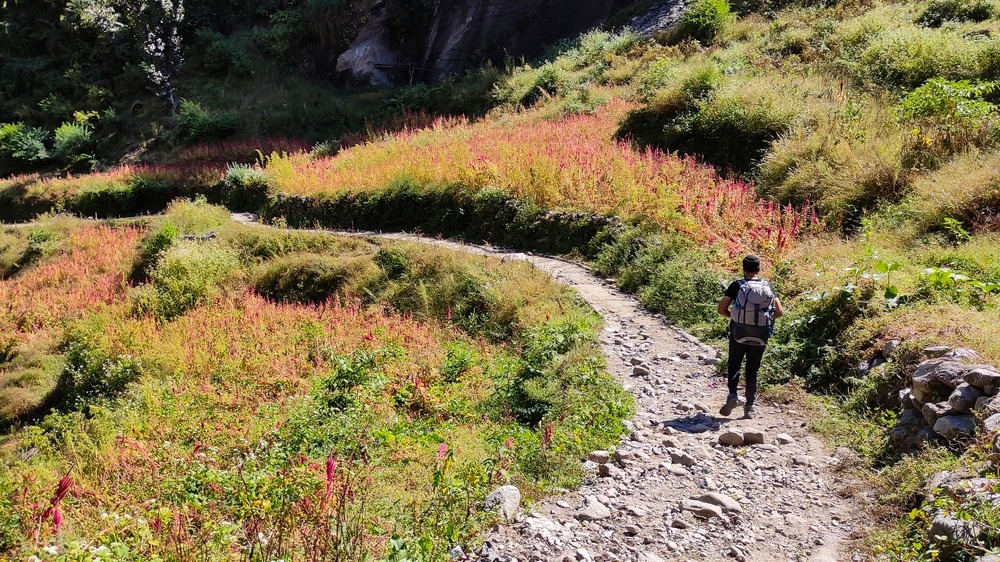Har Ki Dun Trek Difficulty Level Explained for Beginners (Real Talk Edition)

If you’re a beginner thinking about doing the Har Ki Dun trek and you’re wondering just how tough it is—you’re in the right place. No fluff, no promotional nonsense, just straight-up insights based on real experience. I’ll break down the trek’s difficulty level, what to expect day-by-day, and what kind of fitness you’ll actually need. And yes, I’ll also point you to a company that handles this trek well—without trying to sell it to you.
What Makes Har Ki Dun a “Beginner-Friendly” Trek?
Let’s start here: Har Ki Dun is often labeled as a beginner’s trek, and for good reason. It’s not overly steep, it’s not at crazy-high altitudes, and the trails are well-trodden. The maximum altitude is around 12,000 feet (3,650 meters), which is high enough to feel the thin air a little but not enough to trigger severe altitude sickness for most.
The trail gradually climbs, so there’s a natural acclimatization built into the route. And unlike some other Himalayan treks, Har Ki Dun has decent infrastructure in terms of rest stops and villages where you can take a breather.
But don’t mistake “beginner-friendly” for “easy.” You’ll still be walking for 5-6 hours a day, on uneven mountain trails, in sometimes chilly and wet conditions.
Trek Duration & Distance: Know What You’re Signing Up For
The full trek typically spans 6 to 7 days, depending on your itinerary. You’ll cover a total of around 45-50 kilometers round trip. That breaks down to around 6-10 kilometers per day on foot, depending on the specific route and your group’s pace.
Here’s a rough idea of how the days look:
- Day 1: Drive to Sankri (base village)
- Day 2: Sankri to Taluka, then trek to Puani Garat
- Day 3: Puani Garat to Kalkattiyadhaar
- Day 4: Kalkattiyadhaar to Har Ki Dun valley and back
- Day 5: Backtrack to Puani Garat
- Day 6: Trek to Taluka, drive to Sankri
Every day has a mix of forest trails, river crossings, meadows, and the occasional steep section, especially around Day 3 and Day 4.
Terrain Breakdown: What You’ll Actually Be Walking On
This isn’t a manicured trail. It’s a Himalayan forest and alpine route, which means:
- Loose stones and rocks – especially during river crossings
- Muddy patches – if it has rained (and it often does)
- Forest trails – shaded but can be slippery
- Wooden bridges – solid, but narrow and occasionally wobbly
- Snow patches – if you go in early spring or late autumn
Good trekking shoes with ankle support will make your life easier. On uneven terrain, a trekking pole—or even a stout stick—helps with balance.
How Fit Do You Need to Be?
Here’s the truth: You don’t need to be an athlete, but you do need basic cardiovascular fitness. If you can walk for 5-6 kilometers on flat ground without collapsing, you’re halfway there.
To prepare, I did this simple routine a month before my trek:
- 30-minute walks/jogs, 4-5 times a week
- Climbing stairs instead of elevators
- A few practice hikes with a backpack
And trust me, it helped. Going uphill for hours isn’t about speed—it’s about stamina and rhythm. Breathe through your nose, walk at a steady pace, and take breaks before you get too tired. That’s the trick.
Altitude Sickness: Should You Be Worried?
Not really—but you should still be cautious.
Most people don’t get serious altitude sickness on Har Ki Dun, but mild symptoms like headache, tiredness, and loss of appetite are common after 10,000 ft. Hydration is key. Every day, I drank three litres or more of water. Avoid alcohol, don’t rush uphill, and let your body adjust.
Also, the campsites are spaced well, which helps with gradual acclimatization. The company I went with had oxygen cylinders on standby and kept checking for symptoms, which gave me peace of mind.
Weather & Conditions: What to Expect Month-by-Month
Here’s a quick breakdown:
| Month | Conditions |
|---|---|
| March-April | Snow patches, cold mornings |
| May-June | Pleasant, green valleys |
| July-Aug | Monsoon (not recommended) |
| Sep-Oct | Crisp, post-monsoon beauty |
| Nov | Cold, pre-winter vibes |
I went in mid-May, which was honestly perfect—lush greenery, mild weather, and clear skies. Nights were chilly (around 2–5°C), but nothing a good sleeping bag couldn’t handle.
Guided Treks vs. Solo: My Honest Take
I wouldn’t recommend doing this solo as a first-timer. While the trail isn’t crazy difficult, it still has its remote stretches, and network coverage is patchy at best.
I went at Har ki Dun Trek with a team led by The Searching Souls . What I liked? The guides weren’t just showing the way—they explained the region, kept tabs on everyone’s condition, and paced the group well. It didn’t feel like a “tour,” it felt like a journey with experienced folks who knew the terrain inside out.
If you go with any company, pick one that keeps the groups small (8-12 people) and focuses on safety and sustainability over just filling seats.
Gear Checklist: Pack Smart, Not Heavy
I’ll keep this simple. Don’t overpack, but don’t miss these:
Must-Haves:
- Trekking shoes (ankle-high)
- Rain jacket/poncho
- Thermals (top & bottom)
- Down/fleece jacket
- Gloves and woolen cap
- Sunglasses & sunscreen
- Headlamp or torch
- Backpack (40-50L)
- Personal medicines
Optional but Useful:
- Trekking pole
- Gaiters (for snow patches)
- Dry fruits/snacks
Trust me, layering is key. Mornings and evenings are cold, but you’ll sweat by mid-day while walking. Wear breathable clothes in layers so you can adjust as you go.
So, Is Har Ki Dun Trek Difficult for Beginners? Final Verdict
Here’s my honest answer: it’s challenging but doable. If you’ve never trekked before, it’ll push you out of your comfort zone—but not off a cliff. That’s what makes it special.
You’ll feel the burn in your legs, yes. But you’ll also walk through forests straight out of a storybook, cross icy rivers, and stand in a valley that feels like another world. And when you reach Har Ki Dun, surrounded by snow peaks and endless silence, every step will feel worth it.
Just prepare smart, go with a reliable team (like the folks at Himalayan High I mentioned earlier), and listen to your body. You don’t need to race—just walk steadily and enjoy the ride.

